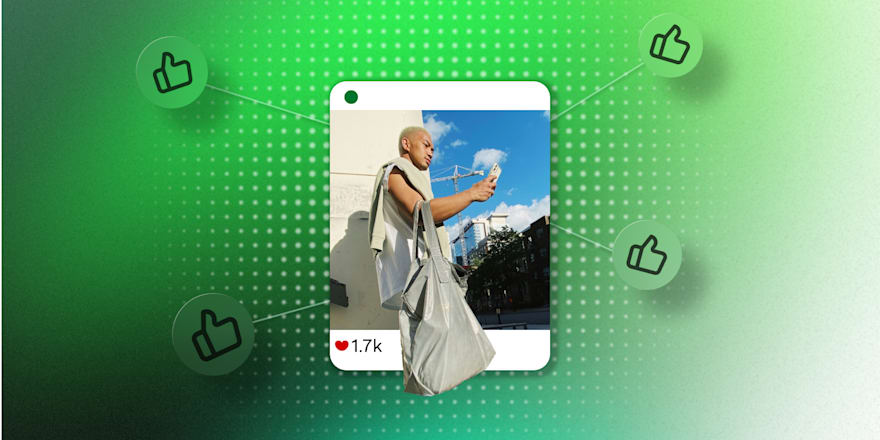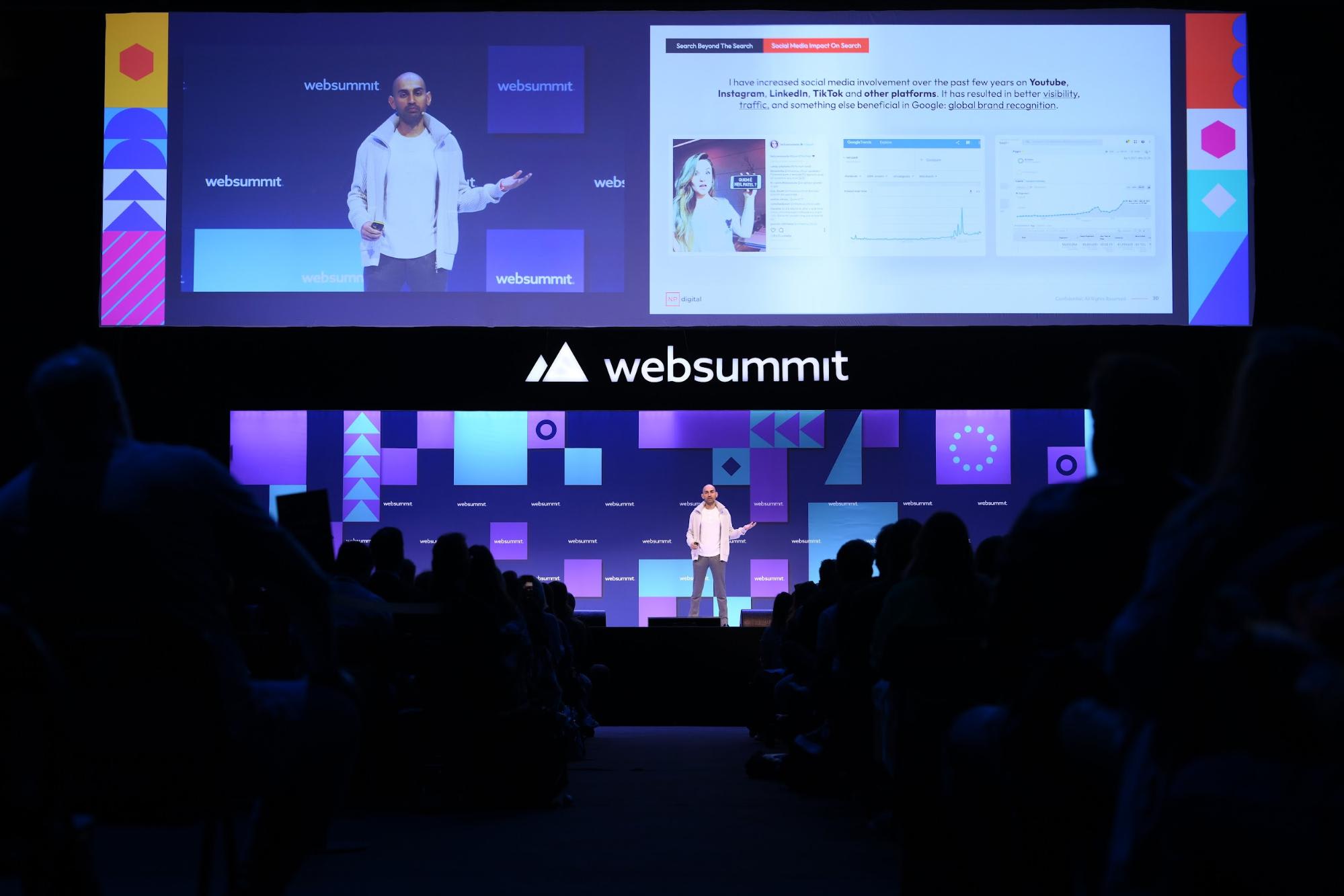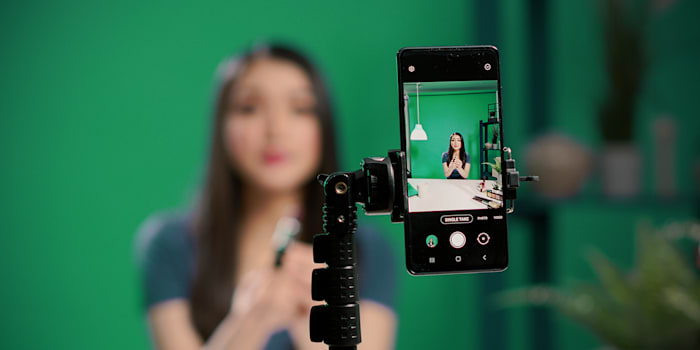Micro-Influencer Marketing: A Guide For Digital Marketers
Micro-influencer marketing is a promotional strategy that leverages social media users with 10,000 to 100,000 followers, defined as micro-influencers. Brands partner with micro-influencers to promote content to their followers.
 January 8, 2025
January 8, 2025 9 minute reading
9 minute reading
Looking to captivate your audience and drive profitable growth? Micro-influencer marketing could be the answer you need.
But why invest in micro-influencer marketing out of all influencer marketing tiers? Micro-influencer marketing drives the booming influencer marketing industry, valued at $25.44 billion in 2024 and growing at an annual rate of 23.3%. With 74% of marketers relying on micro-influencers, they rank among the most in-demand tiers.
This guide will cover how to tap into the power of micro-influencer marketing, share a strategy for partnering with micro-influencers, and review top micro-influencer platforms.
What is micro-influencer marketing?
Micro-influencer marketing is a promotional strategy where companies partner with social media users with 10,000 and 100,000 followers.
Marketers distinguish micro-influencers from other influencers in terms of audience size as defined by follower count. Here’s the breakdown:
Nano-influencers: 1,000 to 10,000 followers
Micro-influencers: 10,000 to 100,000 followers
Macro-influencers: 100,000 to 1,000,000 followers
Mega-influencers: 1,000,000 or more followers
Celebrity influencers: Top mega-influencers whose influence transcends social media (think Kim Kardashian)
Note: Some marketers define these tiers using different numbers.
Brands use micro-influencer partnerships as a marketing strategy to achieve critical marketing goals, including:
Building brand awareness
Nurturing brand trust
Growing social media
Increasing engagement
Driving traffic
Increasing opt-in conversions
Increasing sales conversion rates
Micro-influencer marketing strategy can deploy on any social media channel. Today's most popular micro-influencer marketing social media platforms include:
Instagram
Tiktok
Twitter
Pinterest
Snapchat
Other social media marketing platforms can reach specific niches. For example, LinkedIn can help with outreach to B2B audiences.
Marketers increasingly use or repurpose micro-influencer content for use on other digital marketing channels outside social media. Today's most popular channels for micro-influencer content include:
Paid social media
Brand organic social
Websites and bloggers
Product detail pages (PDPs)
Email
Display ads
Connected TV
Out-of-home advertising (such as billboards)
Brands frequently collaborate with micro-influencers to produce content exclusively for brand-owned channels, a practice known as creator-generated content (CGC). Unlike user-generated content (UGC), which comes from social media followers and customers, CGC is created by influencers—but not shared on their own channels.
Find social media content creators on Fiverr
Why work with micro-influencers?
Marketers recognize that influencer marketing campaigns perform better than many other promotional methods. But why do they favor micro-influencers? Top benefits include lower cost, higher engagement, and niche expertise.

Web Summit
Digital marketing guru Neil Patel considers micro-influencer marketing one of the best returns on investment. "We've done a lot of tests with influencers in all spaces," Patel says. "The ROI of creators is there when you work with micro- or nano-influencers and you do a rev shared deal. We're finding that to be extremely profitable. . .The smaller influencers will push really hard and they’ll do it because they don’t have millions of followers."
Lower cost
Influencer marketing often delivers better results at a lower cost than many other promotional methods. 36% of enterprise marketers say influencer marketing content outperforms other brand-created content. And Influencer Marketing Hub reported that influencer campaigns see an average ROI of $5.78 for every $1 spent.
But, Influencer Marketing Hub also recognizes the challenges of accurately measuring ROI. Namely, experts note that marketers often use inconsistent criteria for measuring results.
Despite this caveat, individual case studies illustrate how cost-effective influencer campaigns can be. For example, a GRIN case study shows that Trifecta generated a 10X ROI from influencer marketing.
Higher engagement
The cost-effectiveness of micro-influencer campaigns stems partly from the fact that micro-influencers command higher engagement rates than most other creators. Although micro-influencers post to a smaller audience, they address niche audiences who share their interests and follow them closely. Their content feels less like an ad and more like insight from a trusted friend.
As added evidence, a Later study shows that nano-influencers and micro-influencers have higher engagement rates than influencers with larger followings. To quantify this, median engagement rates by platform are as follows:
TikTok: 3.25 percent
Instagram Reels: 6.16 percent
YouTube: 7.84 percent
Instagram Feed Posts: 8.29 percent
Pinterest: 36.64 percent
This means that for every 1,000 views, a TikTok micro-influencer generates over 32 shares, comments, or likes. And a Pinterest micro-influencer generates over 366.
These numbers vary by industry and platform. For example, consumer electronics generates lower engagement than cosmetics or e-commerce retailer brands.
High engagement rates deliver tangible business benefits for brands. Audiences that engage with content are more likely to click through, resulting in increased landing page traffic, higher email opt-in rates, more sales, and valuable referrals.
Niche expertise
The higher engagement micro-influencers enjoy often stems from their niche expertise. Influencers who focus on specialized topics build reputations as trusted authorities within their communities. Their ability to consistently provide valuable insights and solutions helps them stand out as experts in their field.
This authority leads to trust and relatability, which naturally extend to the brands they promote. When a niche expert shares a product review or endorsement, it feels genuine and credible to their audience, making followers more likely to act. Micro-influencers are often viewed as passionate individuals or professionals rather than traditional advertisers, which strengthens the authenticity of their recommendations.
How do you create a micro-influencer strategy?
An effective influencer marketing strategy includes six key components:
Planning goals and budget
Selecting influencers
Creating content
Selecting channels and content
Compensating influencers
Managing campaigns
Follow these step-by-step tips to build these components into a successful strategy:
1. Set your goals and budget
Planning sets the foundation for influencer marketing success. Start by setting your micro-influencer campaign goals and budget. Campaigns may aim for various objectives in areas such as:
Sales
Traffic
Sign-ups
Referrals
Brand lift
Brand reach
Brand awareness
Engagement rate
Follower increase
Influencer quality
Products added to the cart
To optimize your results and establish your budget, choose key performance indicators (KPIs) to measure and track your goals. For example, you can measure brand reach in terms of impressions and set an impression goal. This allows you to set a budget based on cost per thousand impressions (CPM).
Allocate your budget to match your target metrics. If goals exceed the budget, adjust accordingly. Aligning goals with your budget lays the foundation for measurable marketing success.
Nécessaire senior influencer marketing manager Cristina Vintimilla says realistic budgeting defines the outcome of influencer campaigns. She says, "The most important question you should ask during your Influencer Marketing interview is, 'What's your monthly budget?' This will determine if the brand has enough resources to build a successful program and hit the determined KPIs."
2. Create influencer selection criteria
KPIs also help you select the right influencers to help you achieve your target goals. Seek influencers whose follower size and engagement rate with your target audience match the goals of your campaign. To find the right type of influencer, use influencer discovery criteria such as:
Audience size: The number of followers an influencer has, ensuring it aligns with your campaign goals.
Audience engagement rate: How actively the audience interacts with the influencer’s content through likes, comments, and shares.
Influencer audience demographics: Key details like age, gender, and location to confirm alignment with your target audience.
Relatability and genuine connection: Influencers who naturally connect with your audience have a greater impact when endorsing your product.
Alignment with your brand values: Influencers who reflect the principles and identity of your brand.
Consistency with your brand voice: Influencers who use a tone and style that complements your brand messaging.
3. Develop content guidelines
To ensure alignment between your brand identity, selected influencers, and influencer campaign goals, develop guidelines for content creation. Clear guidelines help you create briefs that communicate to influencers what deliverables you need from them.
To help you develop content guidelines, create a style guide. A style guide documents your policies for content creation, covering:
Content structure
Brand copy guidelines
Style and grammar rules
Graphic design guidelines
Target audience guidelines
Brand personality and tone of voice
Internal and external linking and hashtags
Messaging guidelines for your brand message, customer journey, and calls to action
Documented content guidelines help you avoid misunderstandings and reduce unnecessary editing, lowering labor time and costs.
4. Decide on your channels and content types
To develop content that achieves your campaign goals, decide which channels and types of content you need to cover. This should be determined by the channel and content types your audience favors. You can use social media analytics and other market research tools to determine which channels and content types to select.
5. Choose your compensation structure
To attract and retain influencers, create a well-designed compensation structure. Compensation can be monetary, or it can take other forms, such as giving influencers free products. Popular monetary compensation models include:
Flat rates per post: Payment based on factors like audience size, engagement rate, and type of content.
Performance-based compensation: Rewards for generating specific actions, such as clicks, conversions, or sales.
Long-term partnerships: Ongoing payments for exclusivity or brand ambassadorship.
Tiered compensation structures: Bonuses for influencers who exceed performance benchmarks.
Affiliate marketing programs: A commission-based approach where influencers earn a percentage of sales through their unique links or codes.
Typical compensation varies by type of influencer, type of content, and digital marketing platform. Research going market rates to develop an attractive compensation plan that fits your budget and campaign goals.
6. Build a campaign management plan
To run an effective influencer marketing campaign, you need a good project management plan. Your plan should cover critical project management elements such as:
Payment procedures: Define how and when influencers will be compensated, including payment methods and timelines.
Content creation deadlines: Set clear dates for when influencers need to complete their content drafts.
Content editing procedures: Outline the process for reviewing and revising content to meet your quality standards.
Content delivery procedures: Specify how influencers should submit their completed work, such as through a platform or email.
Content production deadlines: Establish deadlines for finalizing and approving all content before publication.
Creator onboarding procedures: Provide a step-by-step process to familiarize influencers with your brand and campaign requirements.
Content publication procedures: Detail the steps for scheduling and publishing content across platforms.
Assignment scheduling procedures: Plan and assign tasks, ensuring influencers know their roles and deadlines.
Goals for content type and volume: Define the types of content needed (like posts, and videos) and the required quantity to meet campaign objectives.
An influencer marketing platform with strong project management features can help you run your campaigns efficiently. To assist with storing and managing your visual content, consider using a digital asset management system (DAM).
What are the best micro-influencer platforms?
You can increase the success of your micro-influencer campaigns by using a good influencer marketing platform. Influencer marketing platforms help you discover influencers, manage content, and analyze campaign performance. Here are four of today's top influencer campaign options for small business marketers:
1. Fiverr
Fiverr lets you find influencer marketers, manage influencer campaigns, and scale your campaigns to meet your needs and budget.

Fiverr
When you search for influencer marketing specialists on Fiverr, you can use influencer discovery and vetting tools to help you find the right collaborators. Search based on:
Budget range filters
Delivery time options
Rating and review systems
Experience level indicators (New Seller to Top Rated)
You can search for influencers within specialized service categories, including:
Content strategy development
Performance tracking and analytics reporting
Influencer outreach services for shoutouts and promotion
Fiverr features budget management tools to help keep your campaigns profitable. Clear pricing structures like package options help you estimate budgets accurately. Payment protection features ensure that payments to influencers are handled smoothly.
Fiverr includes project management tools to help you manage campaigns efficiently, including:
Real-time messaging
File sharing capabilities
Progress updates
Milestone tracking
Fiverr offers features to support flexible scaling to meet the needs of your campaign, including:
Various price points
Multiple platform specialists
Multiple geographic locations
Fiverr's platform provides everything you need to run successful micro-influencer marketing campaigns.
2. Shopify Collabs
If you're running a Shopify e-commerce retail site, Shopify Collabs can help you find influencers. Collabs lets Shopify store owners use Shopify's administration panel to find influencers and run affiliate programs.
Collabs includes:
A searchable database to find and recruit creators
Gifting capability to send creators free products
Affiliate campaign performance tracking tools
If you need a solution specific to Shopify affiliate marketing, Collabs provides a simple, though limited solution.
3. GRIN
GRIN provides a powerful—but expensive—influencer marketing platform aimed at larger businesses and enterprises. It features tools for:
Influencer gifting
Creator payments
Influencer discovery
Content management
Reporting and analytics
Relationship management

GRIN
GRIN offers solutions for businesses of different sizes and various types of influencer programs. If you're running large-scale campaigns and can afford $2,500 a month or more, GRIN may be a good option.
4. Klear
Klear (now part of Meltwater) provides an influencer marketing platform for enterprises, agencies, and e-commerce brands. It features tools for:
Finding influencers
Tracking influencer analytics
Managing relationships
Activating influencers at scale
Measuring campaign performance
Klear pricing starts at around $249 a month. If you're an enterprise user or running a creative agency or e-commerce brand, Klear may be a good fit.
Hire micro-influencers on Fiverr
Ready to hire micro-influencers to create standout content and drive engagement?
Check out Fiverr's influencer marketing marketplace, where you can search for talent based on service options, seller experience, campaign budget, and project deadlines.
To keep your campaign on track financially, Fiverr also offers an influencer marketing cost guide to help you estimate expenses and stay within budget.
Micro-influencer FAQs
1. How much do micro-influencers make?
Micro-influencers earn an average of $1,211 per post across all platforms, according to research by DemandSage data analyst Naveen Kumar. Earnings range varies by platform:
Instagram: $100 to $500 per post
TikTok: $25 to $125 per post
Twitter (X): $2 to $20 per post
Facebook: $250 to $1,250 per post
Earnings also vary by number of followers, audience engagement rate, social presence and impact, and post type. Videos earn more than other types of content.
2. How many followers does it take to be a micro-influencer?
It takes approximately 10,000 followers to become a micro-influencer.
3. Do micro-influencers have 1,000 to 10,000 followers?
No, micro-influencers have between 10,000 to 100,000 followers. Nano-influencers have between 1,000 to 10,000 followers.
4. Are micro-influencers wealthy?
Most micro-influencers are lower-middle class, not wealthy. Micro-influencers earn an average of $52,493 per year as of July 2024, according to job search site Indeed. In the United States, this falls in the lower-middle class bracket ($30,001 to $58,020 in 2022). Americans consider a $2.5 million net worth to qualify as wealthy.


